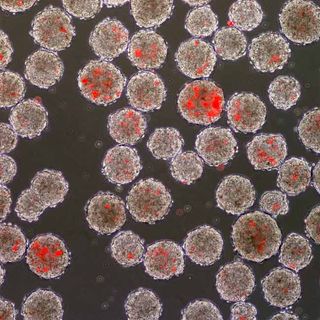How Smallpox Changed the World

Each Monday, this column turns a page in history to explore the discoveries, events and people that continue to affect the history being made today.
Imagine an Egyptologist's surprise when the mummified pharaoh he found and unwrapped in 1898 bore the familiar scars of smallpox, a disease whose first successful vaccination had been discovered only 100 years earlier.
Today it's a medical success story, but before it was eradicated, the smallpox virus spent more than 3,000 years decimating communities across the globe.
The extremely infectious disease was class-blind, killing rich and poor alike, and almost single-handedly wiped out the New World empires encountered by European explorers.
Smallpox was finally controlled by the development of the world's first vaccine in the late 1700s, but fears linger that a few cells remaining in Petri dishes could be used as biological weaponry.
Empires fall
It is believed that smallpox first incubated 10,000 years ago in northern Africa, spreading slowly to the rest of the ancient world. Repeat epidemics of the highly contagious virus — which caused a grotesque rash, fever and often blindness — began popping up a few millennia later.
Sign up for the Live Science daily newsletter now
Get the world’s most fascinating discoveries delivered straight to your inbox.
Aside from speckling the face of Ramses V, the pharaoh who succumbed to smallpox in 1156 B.C., the virus appears in contemporary texts from India and China. Approximately 30 percent of those infected with smallpox died, and the statistics were even worse for children. According to some ancient customs, newborn babies were often left unnamed until they, inevitably, contracted the disease and proved they could survive, historians say.
Smallpox continued to spread across Asia in the Middle Ages and reached Europe by A.D. 700, killing indiscriminately. Waves of epidemics wiped out large rural populations, but didn't spare royalty either: Queen Mary II of England, Holy Roman Emperor Joseph I, French King Louis XV and Tsar Peter II of Russia all died of the disease, the latter on the eve of his wedding.
Perhaps the most defenseless victims of smallpox were the Aztec and Inca Indians of the New World who, with no immunity to European diseases, were almost completely wiped out by the virus before Spanish conquistadors finished them off with weapons in the 16th and 17th centuries.
Dairymaids help create vaccines
By the beginning of the 18th century, 400,000 Europeans annually and one out of every seven Russian children were dying of smallpox, a disease that had now been killing unhindered for at least 2,800 years. The only thing that tied its devastating case histories together was the observation that those who were lucky enough to survive smallpox never contracted it again.
The concept of inoculation — exposing an individual to small amounts of a disease in order to create immunity — was known in Africa, India and China by the 17th century and gained popularity in Europe in the early 1700s. Smallpox was its first target there, and the risky procedure was fairly successful, killing just a small fraction of those injected.
In 1796 a new discovery was made by Edward Jenner, a British doctor. Noting that dairymaids rarely contracted smallpox after bouts of cowpox, a similar but far less dangerous virus, Jenner injected a young boy with matter from a cowpox lesion and later inoculated him with smallpox. The boy did not get sick — Jenner had performed the first "vaccination," a word derived from the Latin vacca, meaning cow. Further testing proved conclusively that the cowpox virus was able to build immunity against smallpox.
Using his theory, similar vaccines were later created for diseases such as yellow fever, mumps, rubella and tetanus.
Biological weapon concern
Smallpox epidemics continued through the 20th century until vaccination programs were regulated and implemented around the world.
In 1980, the World Health Organization declared smallpox completely eradicated, but samples of the virus remain in two laboratories in the United States and Russia, prompting fears of biological warfare should the virus land in the wrong hands.
Revelations in 1992 by a Soviet defector that the USSR was developing a smallpox weapons program, plus the anthrax scare in 2001, only heightened those fears.
There is "credible concern" that the virus may have been obtained by terrorists, according the U.S. Centers for Disease Control and Prevention.
Most Popular


